Oakley Prizm Lens Sunglasses
Prizm lens technology takes off
Oakley launched its Prizm range of lenses with a blaze of hype that promised groundbreaking sport specific sunglasses with exceptional lens performance.
First released for the snowboarding and skiing market, a range of tinted Prizm lenses claimed to cut glare without loss of clarity with improved vision in snow and ice. Glasses flew off the shelves despite the premium price bracket.
Oakley boasted the revolutionary lens technology lets skiers and snowboarders detect bumps, hollows and ice patches much more readily and with greater definition than ever before.
Prizm lenses work by filtering out the wavelengths of unwanted light and boosting those more useful to the viewer. Techniques used by imaging satellites to filter out 'noisy' light were combined with atmospheric data gathered from a range of environments to determine the light wavelengths least needed by the human eye in specific conditions.
The result is a sunglass lens honed to perform best in specified environments, boosting contrast and enhancing colour detail across limited areas of the spectrum. Oakley lenses were quickly launched for a whole range of sports including road cycling, trail biking, golfing, sailing, track and field sports like cricket and baseball – even deep water fishing.
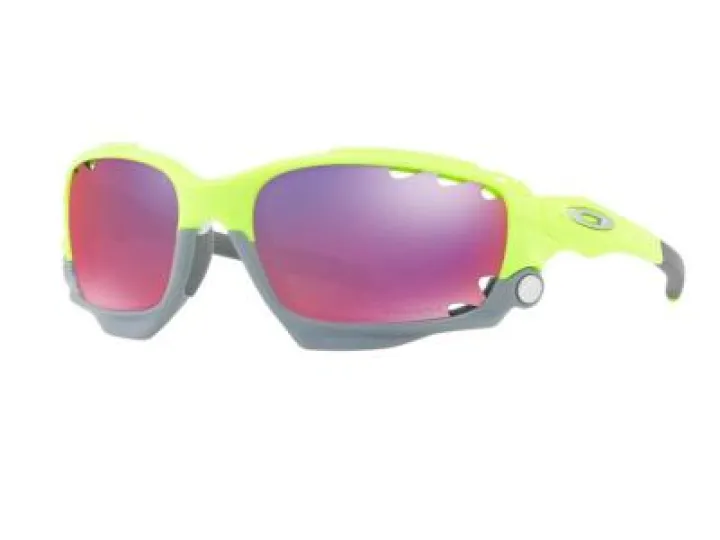




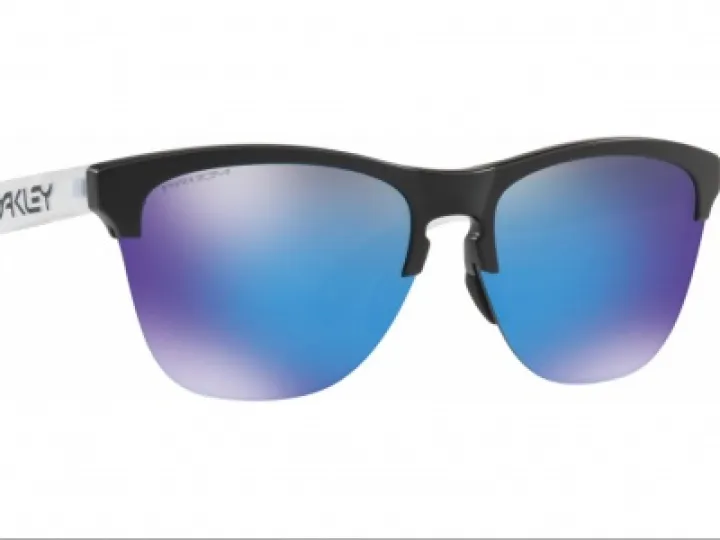

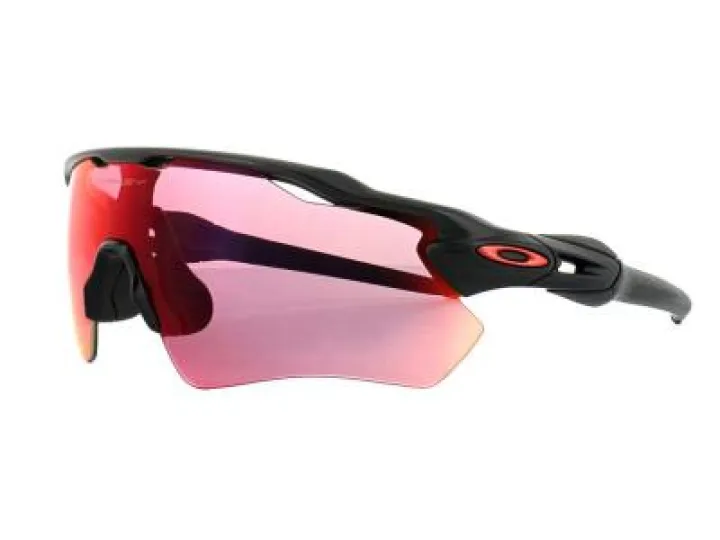
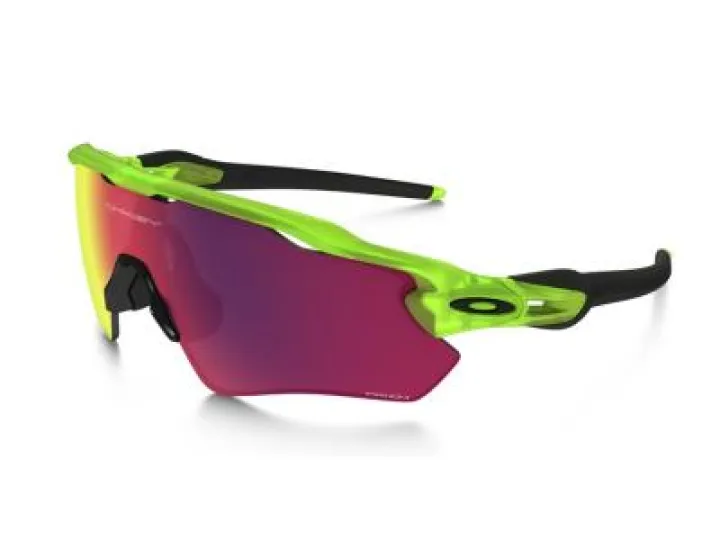


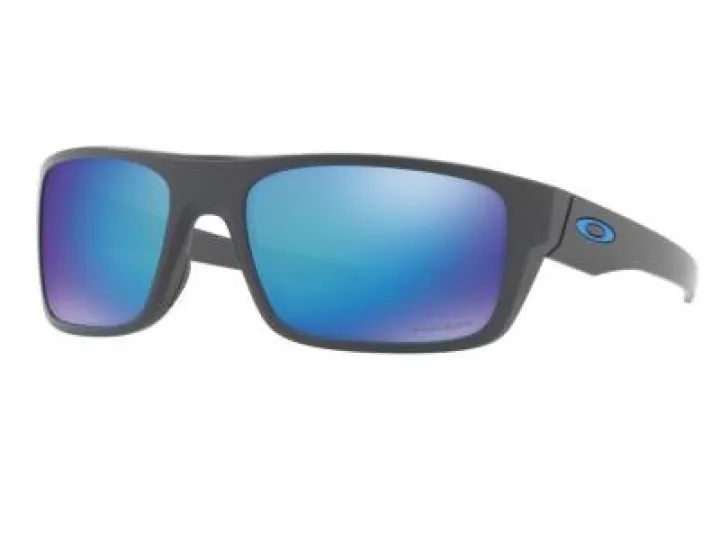
STYLE10033
The marketing people at Oakley promise improved performance for sports enthusiasts prepared to pay premium prices for the new Prizm lens technology. Here are some of the benefits claimed for various sports:
Prizm Snow Lenses
The original Prizm lenses were designed for the whiteout conditions found on the skiing and snowboarding slopes. The lenses come in six 'flavours' each designed to perform best in particular light conditions, making it easier to detect bumps and hollows in the ski run and to spot the glare from ice sheets that can make skiing tricky.
The pinker lenses have a higher light transmission of up to 40% with enhanced contrast that allows skiers to detect slight variations in snow surface while the darker black lenses are aimed at sunny days and to counteract the 'blinding' effect of whiteout conditions.
Prizm Road Lenses
Lenses designed for cyclists claim to enhance details of dark road surfaces through improved clarity in both deep shadows and bright lights. The lenses enhance blues and greens to make for a more enjoyable ride while the bright colours of things like traffic signals become even more vibrant.
Road cyclists report crisper vision with Prizm lenses and higher visibility for road hazards although the 20% light transmission makes them unsuitable for low light use. As most cyclists take to the road during daylight hours this is not much of an issue.
Prizm Trail Lenses
Designed to work best in woods and fields, Prizm Trail lenses enhance reds and browns while improving contrast in the green part of the spectrum. The result is a clearer vision for trail running, hiking and mountain bike riding.
Like the Prizm Road lens, the Trail lens brightens the shadows with 36% light transmission, making it easier to detect small undulations in uneven trail conditions such as those caused by rocks, stones and tree roots. Motocross and off-road riders are better able to distinguish between a dry, wet and muddy sections of the track and to spot the ruts, bumps, holes, and other track irregularities.
Prizm Water Lenses
Aimed at the angler and water sports enthusiast, Prizm Water lenses come in two flavours – shallow water and deep water lenses. Prizm Shallow Water lenses enhance the greens and copper hues while maintaining the bright white, helping anglers define fast moving fish flitting among the shadows that play on the bottom of shallow waters.
Prizm Deep Water lenses are darker and filter out the deeper shades of blue while boosting contrast in the reds and greens. The result is a clearer vision of what is going on deeper below the water's surface.
Prizm Golf Lenses
Golfers need sunglasses that not only filter glare but also reveal changes in texture and give good contrast, especially in the green area of the spectrum. Prizm lenses offer exceptional contrast and good depth perception, notably in the green cast conditions that characterise golf courses.
Players say the subtleties of greens are easier to read, the white ball easier to follow, distances easier to judge and even the textures of rough grass off the fairway more discernible.
Prizm Daily Lenses
Such has been the success of Oakley Prizm Lenses the company launched its 'daily' version for all-around conditions. Contrast is maximised for 'street' conditions, with deeper reds, enhanced blues and crisper greens over a wide range of light conditions.
